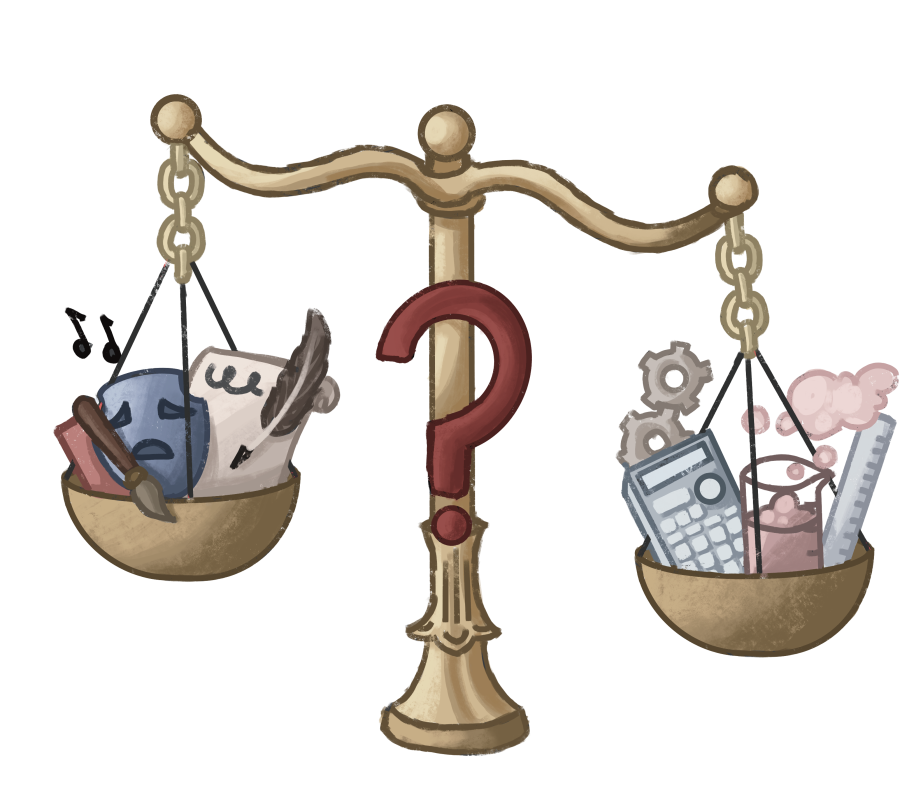In Silicon Valley, one of the country’s leading technological innovation hubs, many students like senior Kyle Park said that they have felt pressure from a young age, both from the school district and their parents, to follow a STEM-focused pathway.
To Park, president of Paly’s Student Institute of the Arts, living in this area has limited his exposure to some creative fields.
“I realized that things existed out there using the application of art,” Park said. “I feel like the problem is that Palo Alto is so STEM focused, I didn’t really have an opportunity to see that there were more creative fields out there.”
Senior Alisha Bernatzki, who applied to music programs including The Chinese University of Hong Kong music program and the singer-songwriter program at New York University, said living in an environment where the main focus has been STEM careers has caused her to want to move to a different area after high school.
“It does definitely make me want to move and pursue my career outside of (Silicon Valley), but I would do that regardless unless I actually wanted to study something like computer science,” Bernatzki said.
In regards to the arts and humanities courses offered at Paly, English teacher Lucy Filppu said she thinks Paly offers a good variety for all students.
“I think there is plenty of room at Paly for students to take humanities courses to their heart’s content if that’s what they choose to do,” Filppu said.
Park and Bernatzki also said they think Paly has done a decent job in attempting to bring more creative opportunities to students. However, Bernatzki said there are definitely areas to improve and possible courses and programs that could be implemented for a richer education.
“I think the American school system can provide more in general for students, but I think Paly has done a good job in supporting their students,” Bernatzki said. “I think it could be cool if we had a song-writing program, or had a music theory program on top of the AP Music Theory class.”
Park said implementing more lanes for Visual and Performing Arts courses would also allow students who are serious about pursuing arts and music to be surrounded by like-minded students with similar interests.
“Increasing the amount of lanes for creative courses would be better,” Park said. “I think some kids are just trying to fill their VAPA credits, and with more lanes, you won’t get stuck in a class with kids who are just going to screw around and are only taking the class to fulfill credits.”
But Park also said taking these creative classes at Paly has caused him to feel judged by his peers, as he said many students and adults in the community see arts classes as not as challenging or ambitious as many math or science classes.
“While there are quite a few art courses that are offered at Paly, I think there’s a stigma around taking them, especially because Palo Alto as an academic environment is so STEM-focused,” Park said. “All the kids are gunning to take the highest level science or math and AP courses, and if a kid decides to take a regular non-weighted art course because they’re interested in it, then it’s perceived as slacking off instead of pursuing their interests.”
Because of this stigma, Park said he was driven to search for creative opportunities outside of school to escape these judgments.
“I pursued a lot of my creative endeavors outside of school, not because I didn’t have the option to, but because I didn’t want people judging me,” Park said. “It’s sort of like a subtle pressure.”
Consequently, Park said the pressure to pursue STEM pathways prevented his exposure to such creative fields earlier on in his academic career at Paly.
“I think I would’ve been able to pursue these interests earlier if I had the confidence to do it, and because of external pressures, I didn’t,” Park said. “Because (majoring in product design) was a super recent decision, I didn’t have the time or skills to create a good portfolio. Had I realized that I wanted to do this earlier, it would’ve been easier to set myself up for opportunities in the future.”

